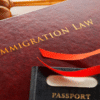Introduction
Canada has long been recognized for its welcoming stance on immigration, offering numerous pathways for individuals seeking new opportunities. However, irregular immigration—where individuals reside in Canada without legal authorization—presents unique challenges for both migrants and policymakers. In 2025, the landscape of irregular immigration in Canada is shaped by evolving policies, enforcement measures, and humanitarian considerations.
Understanding Irregular Immigration in Canada
Definition and Causes
Irregular immigrants are individuals residing in Canada without valid legal status. Common scenarios include:
- Overstaying a visa
- Entering the country without proper documentation
- Remaining after an asylum application has been denied
- Being born in Canada to parents without legal status
These situations often arise due to complex personal circumstances, bureaucratic challenges, or lack of awareness about legal requirements.
Recent Policy Developments
Immigration Levels Plan 2025–2027
In October 2024, Immigration, Refugees and Citizenship Canada (IRCC) released the Immigration Levels Plan for 2025–2027, outlining targets for permanent resident admissions across various categories. The plan emphasizes economic immigration, family reunification, and humanitarian commitments. Notably, more than 40% of anticipated permanent resident admissions in 2025 are expected to come from individuals already in Canada as temporary residents, highlighting a focus on in-Canada applicants.
Regularization Pathway for Out-of-Status Construction Workers
In March 2025, IRCC announced a new pathway to permanent residence for out-of-status construction workers. This initiative aims to process the permanent residence applications of 6,000 undocumented construction workers currently in Canada, providing them with an opportunity to regularize their status and contribute to the country’s infrastructure development.
Challenges Faced by Undocumented Migrants
Undocumented individuals in Canada encounter numerous obstacles, including:
- Limited Access to Services: Without legal status, individuals often lack access to healthcare, education, and social services.
- Employment Exploitation: The absence of legal work authorization can lead to exploitative labor conditions and wage theft.
- Fear of Detention and Deportation: The constant threat of immigration enforcement actions creates psychological stress and hinders integration.
- Family Separation: Undocumented status can complicate family reunification efforts and lead to prolonged separations.
Legal Pathways to Regularization
Despite the challenges, several legal avenues exist for undocumented migrants seeking to regularize their status:
1. Humanitarian and Compassionate Grounds
Individuals can apply for permanent residence based on humanitarian and compassionate considerations, such as establishment in Canada, family ties, and the best interests of children.
2. Temporary Resident Permits (TRPs)
TRPs may be issued to individuals who are inadmissible to Canada but have compelling reasons to remain temporarily. These permits can sometimes lead to permanent residence eligibility.
3. Provincial Nominee Programs (PNPs)
Some provinces offer nomination programs that consider applicants with unique skills or circumstances, potentially providing a pathway to permanent residence.
4. Refugee Claims
Individuals fearing persecution in their home countries may apply for refugee protection in Canada. Successful claimants can obtain permanent residence.
Conclusion
Irregular immigration in Canada presents complex challenges that require balanced policy responses and compassionate solutions. While recent initiatives, such as the regularization pathway for out-of-status construction workers, demonstrate progress, ongoing efforts are necessary to address the needs of undocumented migrants. Understanding available legal avenues and staying informed about policy developments are crucial steps for individuals seeking to regularize their status in Canada.











